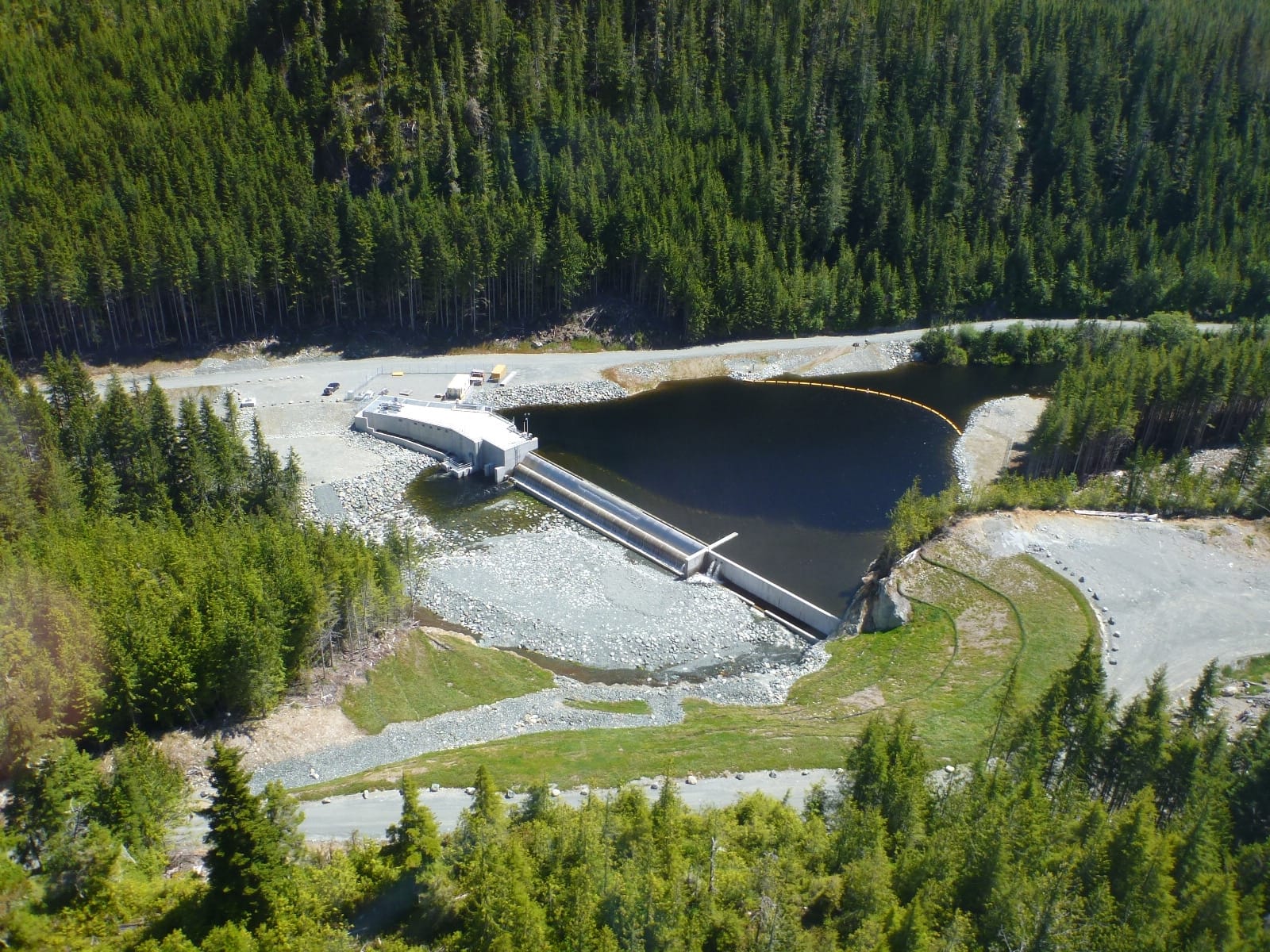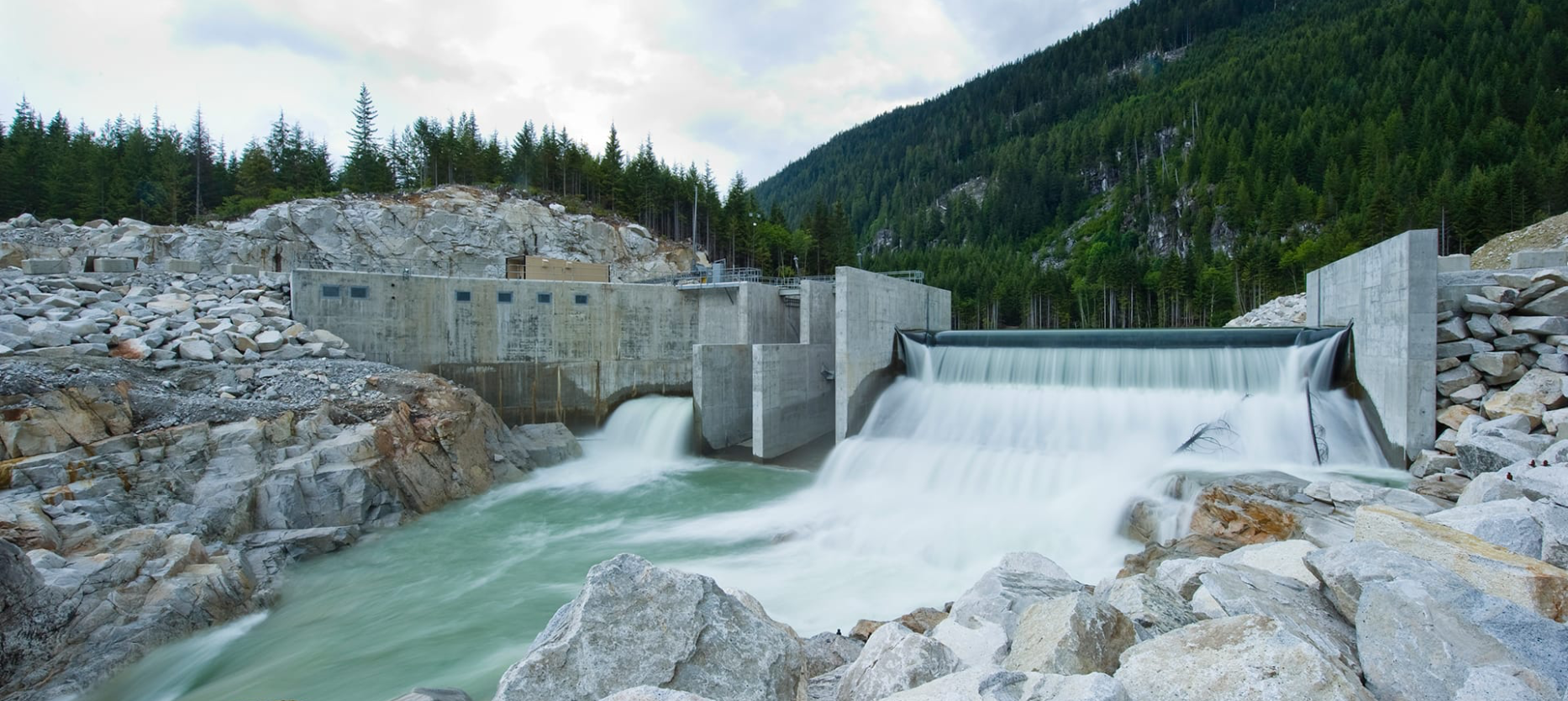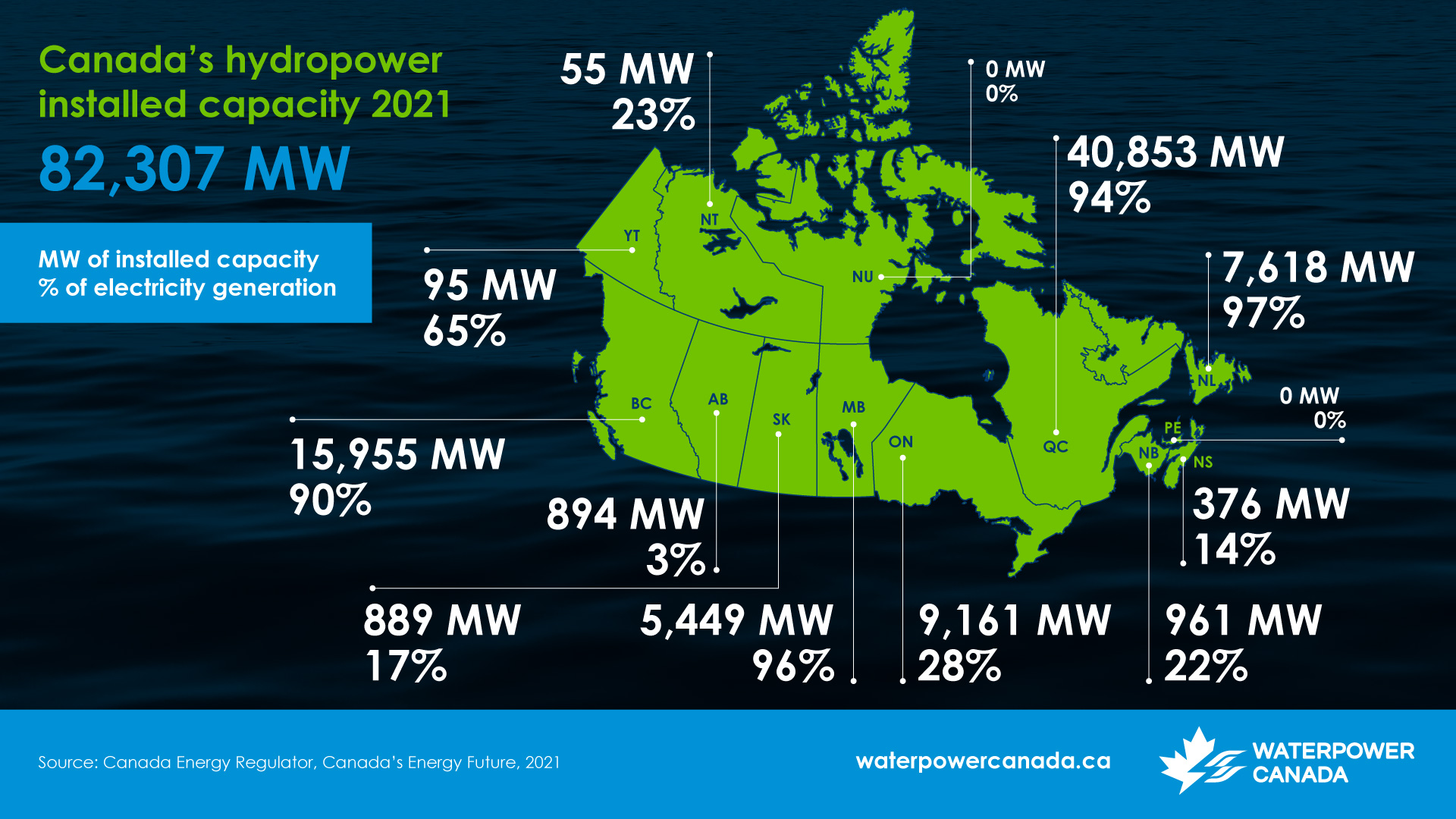
A truly sustainable energy resource
While there are a number of ways to generate power from moving water, in all cases the energy is “renewable” (“derived from a natural process that is replenished at a rate that is equal to or faster than the rate at which they are consumed”). As water is not consumed, depleted or wasted in the process, and as the greenhouse gas emissions from water power are minimal over a facility’s lifetime, waterpower is an extremely sustainable energy resource.
The large majority of hydropower generated in Canada comes from run-of-river or reservoir generating stations.
In Canada, much of our hydroelectricity is produced when water is stored in a reservoir behind a dam. The “potential energy” of this water is converted to kinetic energy when it flows upon release from the reservoir into the penstock. “Pumped storage” is another type of hydropower which also stores water in a reservoir. At pumped storage facilities, water is pumped up to an elevated reservoir for storage. When electricity generation is required, the water is released into the penstock.
“Run-of-river” hydropower is also common where water from a river simply flows directly into the penstock. “Hydrokinetic” is a less common approach in which a turbine is placed in a river bed or tidal area to directly capture the energy in the water flow.

WhyWhy waterpower?
As the only clean, renewable and abundant source of baseload dispatchable electricity, waterpower truly is Canada’s natural advantage
 60% Of Canada’s Electricity Generation
60% Of Canada’s Electricity Generation
Canada’s #1 electricity source producing 385 TWh/year, 60+% of Canada’s total electricity generation.
Fourth Largest
Waterpower Producer
Canada is the fourth largest hydro producer in the world
 Canada’s Green Battery
Canada’s Green Battery
155,000 MW of technical undeveloped waterpower potential in Canada
 No Air Pollutants
No Air Pollutants
Canada’s waterpower-dominant electricity grid is the cleanest of all G20 nations
 82,307 Megawatts of Installed Capacity
82,307 Megawatts of Installed Capacity
550+ facilities representing 82,000+ MW of installed capacity
 48,790 Jobs
48,790 Jobs
48,000+ jobs supported by the sector


